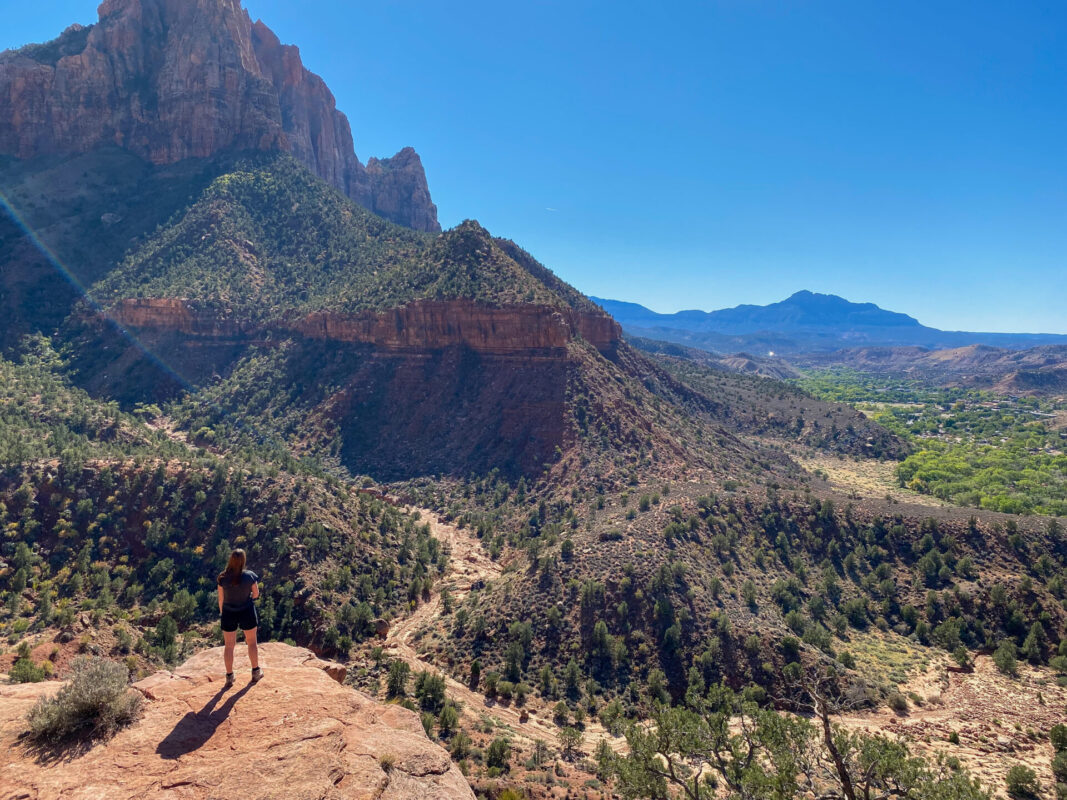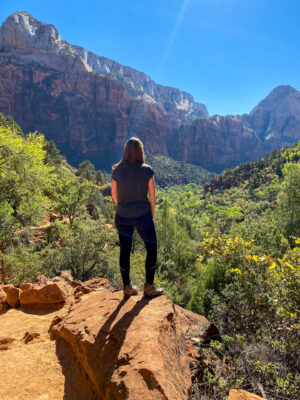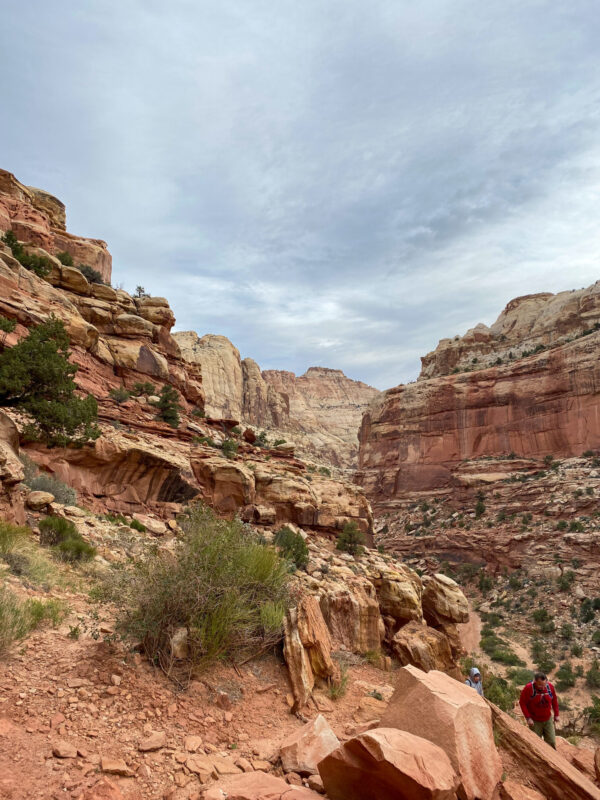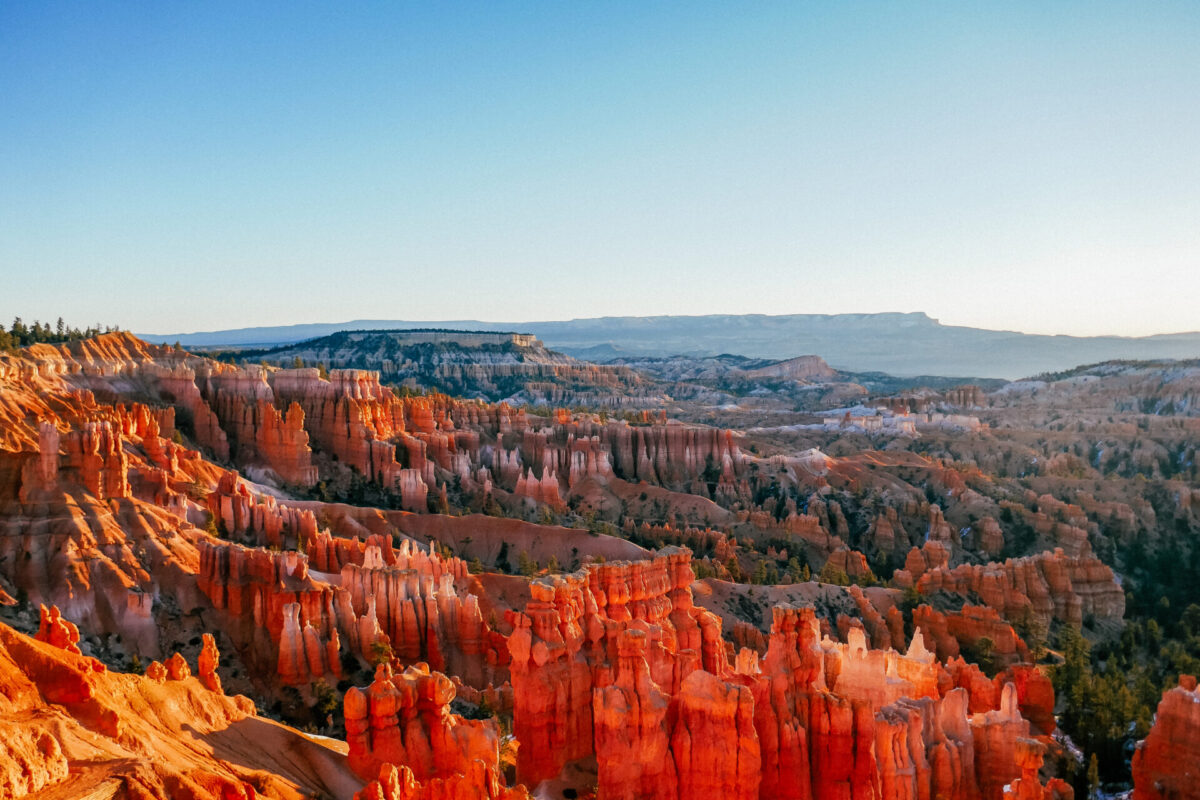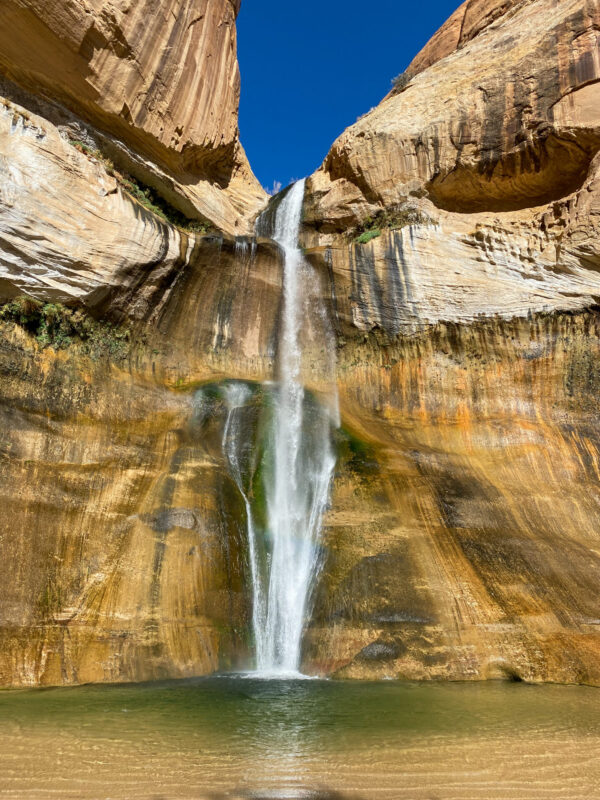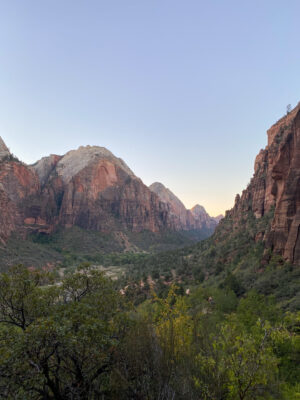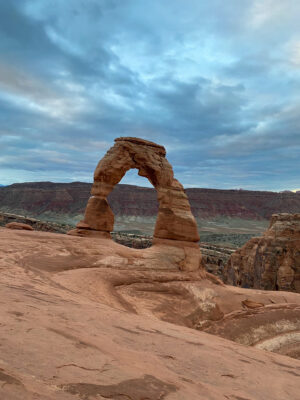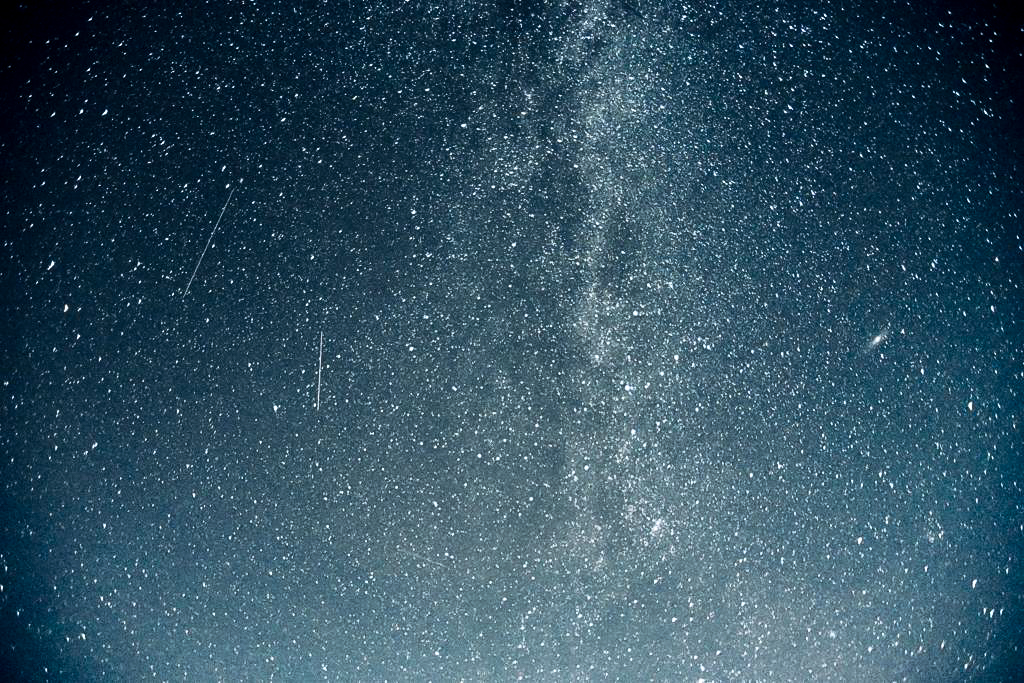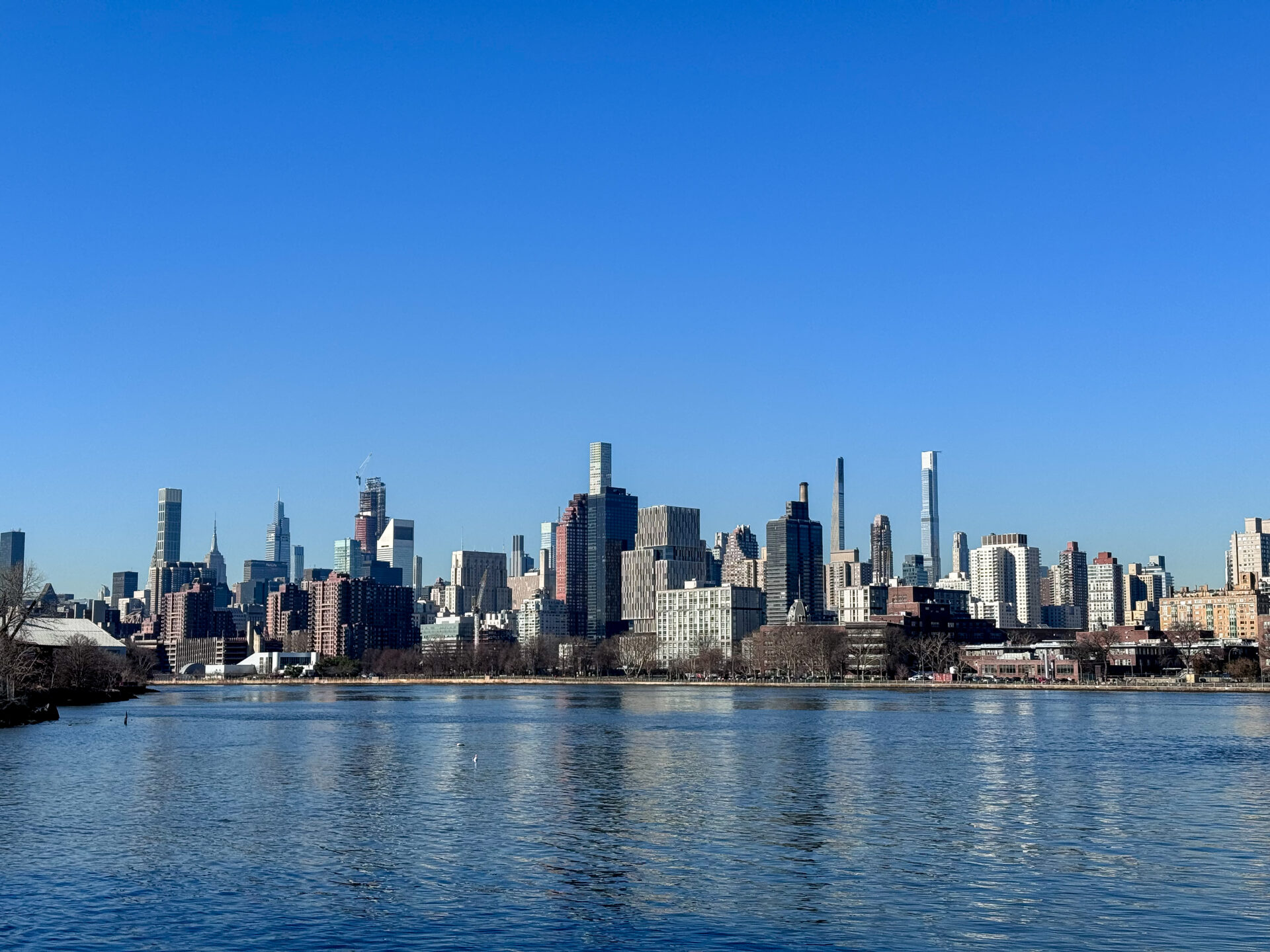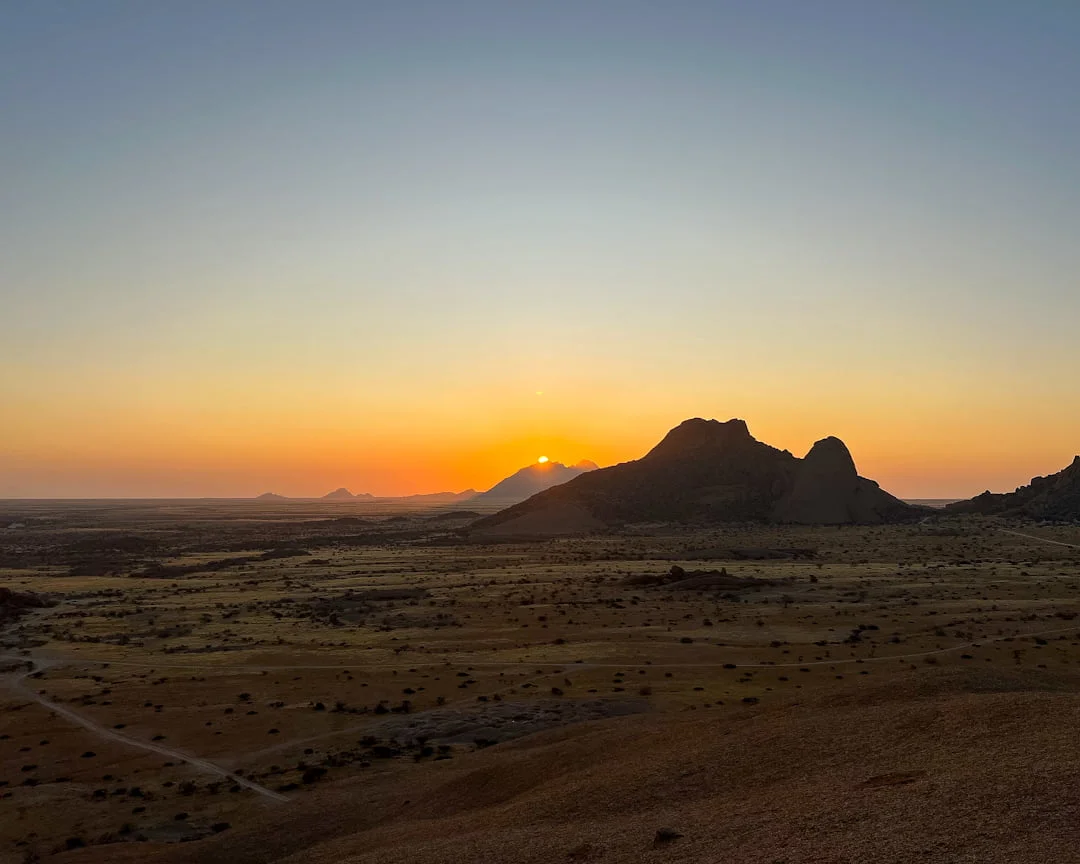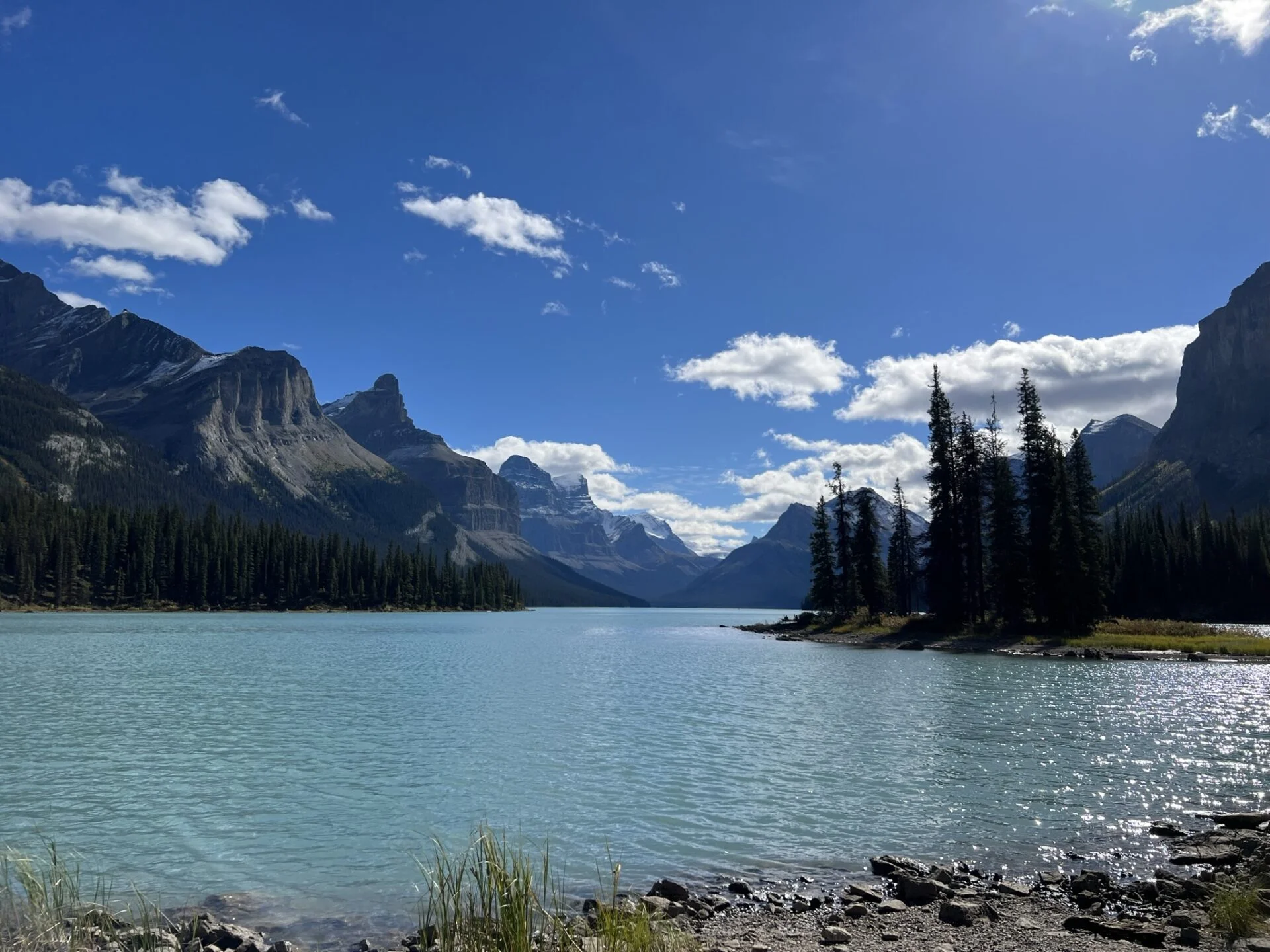A road trip through Utah is a dream for many. With its incredible landscapes, fiery red rocks and the Mighty 5 National Parks, there really is nowhere else like it on Earth. To get the best out of your epic road trip, it’s important to know what to pack.
In this guide, I’ve shared the ultimate packing list for the Utah National Parks. This includes 17 essential packing items and helpful apps to download.
This packing list is designed for those planning a road trip through Utah, staying in hotels or hostels and exploring the national parks. Your packing list may vary depending on the time of year you visit, but everything below will be useful throughout the year.
If you’re planning a trip to Utah, have you seen my Utah road trip guide?
Where to buy last minute Utah packing items
Arrived for your Utah road trip and think you’ve forgotten something? Fear not! Despite Utah’s vast desert landscape, there are many cities and towns along the way where you can buy the essentials.
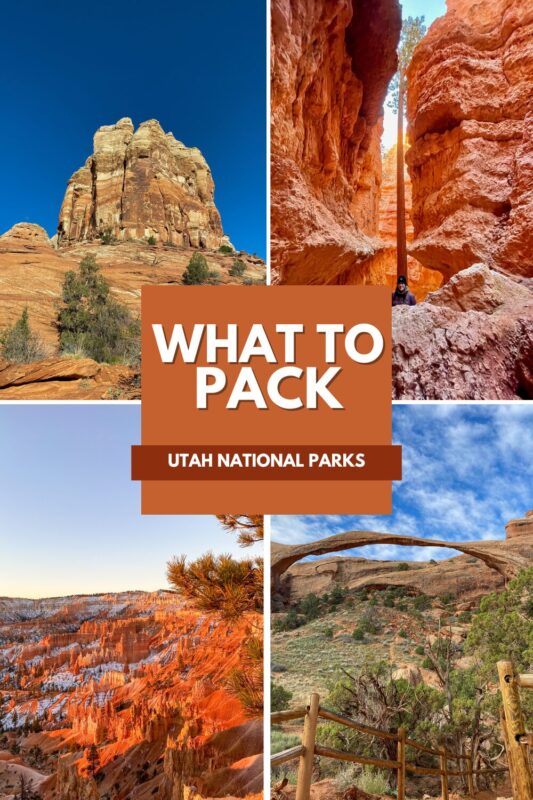
Most road trips through Utah will start in Las Vegas or Salt Lake City. These two major cities are great spots to grab some last-minute packing items.
If you’ve already begun your road trip, Moab is a great location to grab any items you’re missing. Moab is right next to Canyonlands and Arches National Parks. The main street is lined with outdoor shops.
In fact, you’ll find most of the towns around the Utah National Parks are filled with outdoor shops and grocery stores. In Zion National Park, there are outdoor shops on the edge of the park so you can grab anything you’ve forgotten there.
Packing List for Utah National Parks
Hiking Boots
A good pair of hiking boots is an essential packing item on a trip to Utah. Utah is rugged, vast and very rocky. A sturdy pair of hiking boots offer the best support on this type of terrain.
Not planning a long hike? A pair of hiking boots is still a great idea. Even some of the short hikes in Utah can be rocky with uneven or unstable surfaces. Hiking boots with good grip and ankle support will give you the best protection.
Hiking shoes (with less ankle support) can also be a good option. The main thing is that you feel confident and comfortable with your shoes when traversing difficult terrain.
Warm or cool clothes
The type of clothes you pack will depend on the time of year you visit.
In the summer months, the heat in Utah can be unbearable. While hot weather often means shorts and a vest or tank top, this might not be the best option here. Yes, it will keep you cool, but it’s also a good idea to have some protection from the sun.
Consider moisture wicker material to keep you cool and longer sleeves to protect you from the sun. Ideally, try to avoid cotton, especially if hiking. Cotton + sweat + long hikes = a recipe for being uncomfortable.
In the shoulder seasons (spring and fall), you’ll find the Utah weather patterns a little more unpredictable. I’d suggest taking both clothing for cooler and warmer weather. Basically… layers (see more on that below). The early morning and evenings can be particularly cold.
For the winter months in Utah, pack plenty of warm clothes, base layers and a warm jacket – I’d suggest a down jacket. Don’t forget a warm hat and gloves too. I went to Bryce Canyon for sunrise on a snowy October morning, I don’t think I’ve ever been that cold in my life.
Layers
If you’re visiting Utah in the autumn, winter or spring, it’s essential to carry plenty of extra layers. The Utah weather can be unpredictable and cold, especially at higher elevations such as Bryce Canyon or Zion National Park.
Carrying a warm, thick coat is all very well and good but it’s not going to be much help when hiking. Opting to go for thinner and warm layers is a much better option.
I’d recommend taking a down jacket as your main top layer. For base layers, consider items such as long-sleeved shirts, fleeces and merino wool items.
Waterproof rain jacket (and trousers)
A rain jacket is one of the most important items on your Utah packing list. Even if you’re not planning to do any long hikes, ensuring you have a waterproof jacket to keep you dry is important.
The last thing you want is to find yourself caught in a rainstorm, soaking wet and freezing cold. I’d suggest finding a rain jacket that is also windproof. Even in the summer, Utah can see wind and rain.
If you’re worried about a rain jacket taking up too much space, consider a packable one. Brands such as The North Face, Kathmandu and Rab all do packable waterproof jackets.
For hikers, don’t forget those waterproof trousers (pants). No, they don’t always look the part, but they’re important for keeping you dry and warm when hiking. Imagine going on a long hike, getting soaked then having to hike soaking wet for the rest of the walk. No, thank you!
Tip: the weather forecast isn’t always accurate in Utah. Carry a waterproof, even if it’s not due to rain.
Sun protection items
Anyone who has been to Utah will know how powerful the sun can be. This vast landscape sits at a higher elevation than some areas of the United States, making the sun much more powerful.
Days in the summer months are known to be long with strong UV rays. Many of the hikes in Utah also offer little respite from the sun, with large portions of the trails out in the open.
With this is mind, it’s important to include sun protection items in your Utah packing list. This includes a sun cap or sun hat, sunglasses and SPF protection.
You may also want to consider taking thin long sleeve layers to keep your arms covered. Uniqlo has a great range of clothing which is designed to protect you from the sun while keeping you cool in warm weather.
Bug spray
The summer months in Utah are guaranteed to come with pesky insects who want nothing more than to bite us.
When embarking on a road trip through Utah’s National Parks, be sure to carry plenty of bug spray. You can choose a strong chemical repellent such as Deet or opt for something more natural. Most bugs seem to hate anything with lemon in, so opt for a natural citrus repellent if you can.
I’ve personally found the repellent bracelets to be useless, so always go for bug spray instead.
If you’re camping in Utah, consider purchasing a bug repellent candle for the evenings.
Hiking backpack or daypack
Next up on your packing list for a trip to Utah’s National Parks is a suitable hiking backpack or daypack.
What you need to bring will depend entirely on what you’re planning to do. If you’re planning long day hikes or overnight hikes with camping equipment, you’ll need a bigger backpack.
Even if only short hikes are on your itinerary, it’s still important to have the correct daypack. It’s likely you’ll have to carry water, layers, a waterproof and snacks at the bare minimum.
For shorter day hikes, a 20 or 30-liter daypack is normally sufficient. For longer hikes with camping gear, you’ll need one much bigger.
Note: I personally love this packable rucksack from Rohan. It’s been with me on hikes all around the world and comes in two sizes (16l &25l). The best part? It’s packable! It’s one of the best daypacks for short hikes and day trips.
Still struggling with what to pack on your trip to Utah? Read my guide on a road trip through Utah to see what else you might find helpful.
Headlamp or a Torch
I’d recommend packing a headlamp or torch for your trip to Utah. Even if you’re not planning to camp, you might find these items come in handy.
For a hike at sunrise or sunset, packing a headtorch is essential. You’ll be doing at least one way of the hike in the dark and want to see where you’re going. Utah also has some dangerous insects such as scorpions and snakes. If you do find yourself hiking in the dark, a headtorch is going to be essential.
Small plastic bags
This is a bit of a random one, but small plastic bags or ziplocks always come in handy on these type of trips.
Wet clothes? Put in a plastic bag. Litter on your hike? Put in a plastic bag. Snacks? Put in a ziplock. Dirty shoes? Put in a plastic bag. You get the idea…
I’m not sure I’ve ever been on a road trip where these haven’t come in handy. For grocery shopping, I’d recommend packing reusable bags too.
Large water bottle and a spare
It goes without saying that carrying water is important, but in Utah this is especially true. In fact, one of the biggest risks to visitors to Utah is dehydration. I often saw signs warning people not to hike in the peak heat and to ensure they are drinking water.
Put simply, you need to carry water with you on any visit to Utah’s National Park. Even if you’re only planning a short hike, you’re going to need it. Carry water and carry more than you think you’ll need.
Many of the visitor centers have spots to fill up your water bottles, but once you’re on the trails and in the parks, that won’t be the case. I’d suggest having at least 2 reusable water bottles you can refill and carry with you.
For longer hikes or overnight hikes, you could also consider a hydration pack. This sits in your backpack with a tube to drink from making it more convenient.
Tip: it’s a good idea to carry electrolytes if planning to do any strenuous hikes (or longer hikes). Electrolytes will help to keep your body hydrated. When hiking in hot weather, have some electrolytes to hand.
Water shoes
Planning to get your feet wet in Utah? Pack water shoes. Utah is filled with outdoor activities such as river rafting and kayaking, and you don’t want to wear your hiking boots or sneakers for this. Even if you’re not planning any water-themed activities, Utah is filled with rivers and lakes to swim in. Water shoes or sandals really are the best option for this.
A popular water-based activity in Zion National Park is hiking ‘The Narrows’. This famous slot canyon leads hikers through the Virgin River. The footwear you need for this will depend on the time of year you go, but water shoes are a popular option for the summer.
Additionally, you might find that hiking sandals such as Tevas are useful for other reasons. After hiking all day, putting on some sandals which also happen to be waterproof can be a pleasant relief. I’ve travelled all around the world with my Tevas and never regretted having them. They’re great for shorter and easy hikes and for swimming.
If you’re planning to get wet or simply want some comfortable shoes that aren’t hiking boots, consider adding water shoes to your packing list for Utah.
Snacks
I won’t lie, snacking is one of my favourite parts of a road trip or hike so I don’t say this lightly, but bring snacks!
Utah’s Mighty 5 are remote. You won’t find shops or many places to buy food inside the parks themselves. This means you’ll need to bring anything you want to eat in the parks with you.
If you’re hiking, you’ll use a lot more energy than normal so it’s extra important to pack snacks. Granola bars, trail mix, protein bars and fruit are a great snack option for hikes.
Swimsuit
It would be easy to overlook including a swimsuit on a packing list for Utah’s National Parks, but it’s a good idea to have one.
Swimming in lakes is a popular activity in Utah during the summer months, and you don’t want to miss out. Jumping in a cold water lake after a long, hot hike is the perfect way to cool down and reset those tired muscles.
Utah is also home to hot springs, many of which are open for swimming.
Another one of my favourite places to swim in Utah is the waterfall ‘Lower Calf Creek Falls’ in Grand Staircase-Escalante.
Visiting Bryce Canyon? Here’s how to spend one day in Bryce Canyon.
First Aid Kit
Carrying a first aid kit is important on any road trip, but especially if you’re planning to hike.
Utah is vast and empty, and some of the hikes are long with no resources or facilities. There’s also often no cell signal or phone signal. If something goes wrong, you want to be prepared.
Of course, the national parks do all have visitor centers which will carry a first aid kit, but if you’re on a hike, you might be a few hours walk away.
Make sure you pack a well-stocked first aid kit on your trip to Utah. Even getting a blister on a hike can cause problems, but with a first aid kit, it will be much easier to manage.
Lunch Storage and Cutlery
The National Parks in Utah have limited facilities. You’ll find it way more convenient (and cheaper) to take your own lunch into the parks.
Remember to pack tupperware, sandwich bags and cutlery for this. I recently invested in a collapsible tupperware for my travels, and it’s been amazing. It takes up little space and means I can easily carry my lunch with me.
You can also buy reusable cutlery sets designed for backpacking and camping trips. These are ideal for a road trip through Utah.
Maps
In this day and age, we tend to rely on our phones for most things, including maps. However, having a physical map on your packing list for Utah is a good idea.
It’s common to have no cell service on road trips through Utah. Yes, you can download offline maps via Google Maps, but having a physical map as a back-up is sensible.
Each of the national parks will also have maps at their visitor center. They normally highlight the key areas of the parks including the hiking trails. Pick one of these up in case anything happens to your phone.
Portable Battery Charger
For longer hikes in Utah, carry a portable battery charger for your phone. The last thing you want is to be on a hike, your phone dies and you have no access to your phone.
A portable battery charger is the best way to prevent this from happening. They come in all shapes and sizes so you can opt for a smaller and lighter one. Keep this in your daypack during your road trip through Utah.
Helpful Apps for Utah’s National Parks
It isn’t just physical items that are useful for a trip to Utah, consider downloading these apps. These apps are all especially helpful for a road trip through Utah, whatever the time of year you visit.
There are plenty more apps out there to help you explore the National Parks in the United States, but the below apps are all ones I’ve personally used myself.
AllTrails
AllTrails has to be one of my absolute favourite apps. If you’re planning to do any hikes in Utah, be sure to download this app ahead of time. You can research hiking trails and download the trail offline. This means if you lose signal, you’ll still be able to follow the map. It’s particularly helpful for those who are planning to hike alone.
Google Maps
An obvious one but Google Maps. This app will help you get between the parks and find facilities such as grocery stores and parking lots.
Utah is huge and there will be times you have no cell service or phone signal. You can download maps on Google offline so they’re still accessible. This feature has saved me so many times on road trips.
Maps.me
Maps Me has only come to my attention recently, but it’s a fantastic app with many great features. You can download any map offline, including general directions or hiking trails.
For hiking, I personally prefer AllTrails as it tends to have more information. But Maps Me is a great alternative and combines the power of Maps Me and Google together.
StarTracker
Planning to stargaze in Utah? Have the StarTracker app downloaded. Simply point your phone camera at the sky, and the app will tell you everything about what you’re looking at.
Did you find this packing list for the Utah National Parks helpful? Share on social media below.
OTHER UTAH POSTS
Planning a road trip through Utah? Here are other helpful posts to help you plan your dream trip.

